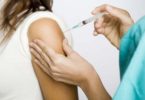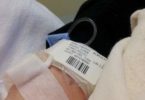What's in this article?
What is Costochondritis
Costochondritis (kos-toe-kon-DRY-tis) is an inflammation of the cartilage that connects a rib to the breastbone (sternum). Pain caused by costochondritis might mimic that of a heart attack or other heart conditions.
Costochondritis is sometimes known as chest wall pain, costosternal syndrome or costosternal chondrodynia. Sometimes, swelling accompanies the pain (Tietze syndrome).
Costochondritis usually has no apparent cause. Treatment focuses on easing your pain while you wait for the condition to improve on its own, which can take several weeks or longer.
Costochondritis usually goes away on its own, although it might last for several weeks or longer. Treatment focuses on pain relief.
Costochondritis Causes
Costochondritis is an inflammatory process. Nevertheless, it usually has no definite cause. Repeated minor trauma to the chest wall or viral respiratory infections can cause costochondritis. Occasionally, costochondritis as a result of bacterial infections can occur in people who use recreational IV drugs or who have had surgery to their upper chest. Costochondritis can also be a feature of relapsing polychondritis, reactive arthritis, fibromyalgia, and injury.
Different types of infectious diseases can cause costochondritis, although this is uncommon.
- Viral: Costochondritis commonly occurs with viral respiratory infections because of the inflammation of costochondral junctions from the viral infection itself or from straining from coughing.
- Bacterial: Costochondritis may occur after surgery and be caused by bacterial infections.
- Fungal: Fungal infections are rare causes of costochondritis.
Costochondritis can also occur with certain forms of arthritis, such as ankylosing spondylitis and psoriatic arthritis, and is sometimes associated with breastbone pain (sternum pain) in these conditions. Costochondritis can occur in people with fibromyalgia.
Who is at a High Risk for Costochondritis?
Women and those over 40 are most commonly diagnosed with costochondritis. You may be at a higher risk for this condition if:
- you participate in high-impact activities
- you perform certain kinds of manual labor
- you have allergies and are exposed to irritants
If you have any of the following conditions, you may also be at higher risk:
- rheumatoid arthritis
- ankylosing spondylitis
- Reiter’s syndrome
Medical opinions differ as to the ages most at risk for costochondritis. In general, anyone who is exposed to some of the above situations can be at higher risk. Doctors warn against handling heavy loads in an inefficient way, as this can stress muscles in the chest area. For instance, younger people should be careful with heavy schoolbags, and adults will want to be careful if carrying out manual labor.
Symptoms of Costochondritis
The pain associated with costochondritis usually:
- Occurs on the left side of your breastbone
- Is sharp, aching or pressure-like
- Affects more than one rib
- Worsens when you take a deep breath or cough
Diagnosing Costochondritis
Your doctor will likely diagnose costochondritis based on the pain this inflammation produces. During a physical exam, your doctor will try to assess pain levels by manipulating the rib area and may also look for signs of infection or inflammation. He or she will also likely ask about personal and family medical history relating to chest pain.
In cases where doctors need to rule out other conditions, such as cardiovascular problems, X-rays and blood tests may be done.
Costochondritis Treatment and Home Remedies
- Treatment of typical costochondritis often involves conservative measures, such as local heat or ice applications to relieve the symptoms.
- Medications to reduce inflammation, such as ibuprofen (Advil, Motrin) or naproxen (Aleve), can be helpful. These should be taken with food and not taken by people with stomach problems, ulcers, kidney disease, or bleeding disorders.
- Avoid unnecessary exercise or activities that make the symptoms worse. Avoid contact sports until there is improvement in symptoms, and then return to normal activities only as tolerated.





